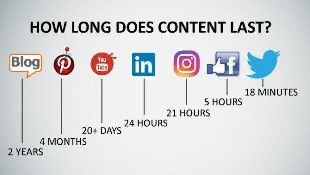The Role of Social Media In Your Marketing

Social media has grown into a major new marketing platform. Traditionally the marketing communications mix consisted of a range of marcoms channels including direct mail, advertising, publicity, packaging and sales promotions.
Social media turns everyone into a modern day diarist and provides them with a way to capture their daily lives, write about hobbies and moments in their personal histories, work life and even their wider nations. Everyone now has the ability to be a Samuel Pepys who became most famous for the diaries he wrote for nearly 10 years as young man.
Not only has social media given us a range of new platforms and marketing communications channels. We now also have new terms such as ‘blogger’ and ‘vlogger’ to describe people who keep their own blogs and video-based blogs. We also of course has Emoji’s and some people can write whole sentences without having to use a single word. Emoji’s are of course not new. The Egyptians and many cultures used icon or graphic based language to describe stories thousands of years ago.
When it comes to the marketing of businesses and organisations each needs to decide just where social media fits into their own communications platforms. The social media marketing mix is diverse and includes a range of every growing mediums:
- Blogs: whether built into a website or part of popular platforms including Wordpress and Blogspot.
- Pinterest: a picture-based portal where you can attach photos to clipboard themes.
- YouTube: a video-based channel for sharing video content generated as a full professional production or one made on a smart phone.
- LinkedIn: a platform mostly concerned with business topics and used to share company or industry related information and build a contact base.
- Instagram: a photo-based platform for sharing photos whether personal or business related, with comments.
- Facebook: probably the main personal social media channel for connecting individuals and used by organisations and companies.
- Twitter: a text based platform to which you can attach photos and videos for sharing.
- Google+: Google’s version of Facebook which still has relevance and links to a Google+ profile and local business listing.
All of these social media channels can be interlinked if required to allow multiple channel content sharing.
So how do you choose the social channels that are right for your business and organisation? The mix is very much dependent on what you are trying to achieve. The information graphic in this blog post shows the longevity associated with each channel and gives a fairly good guide in terms of the length of time a post can be relevant. Of course all your content builds up over time to create a portfolio and the important point is to consider the content you will use.
Content marketing is now a term in its own right. Copywriters now have competition. Traditionally a copywriter or ‘Wordsmith’ would be employed to write copy for your adverts, brochures, websites, manuals and so on. The copy was professionally written and edited and then printed and used. One of the reasons for using a copywriter was that it was costly to change written text one printed. Imagine finding an error in a piece of literature and having to destroy and reprint them.
The ease with which social media content can be generated, edited and even deleted if not wanted has almost de-skilled copywriting. Whilst there is an every growing demand for quality content, modern social media platforms and the wide spread use of laptops, tablets and smart phones allow anyone to generated their own content. Within internet marketing itself, there are now many companies who call themselves content marketing specialists. These companies will generated content for your campaign, company or organisation and then post it for you.
When looking at which social media platforms are right for your marketing campaign, its important to look at the content you have and where it will be generated. One of the biggest complains from a marketing department is that they struggle to get even bad content from people within the company. This is partly an education process and also one of engagement. Once sales and service teams realise the importance of a client testimonial or site installation photo, potential content can start to flow.
Brands tend to use Instagram and Pinterest if they have photos made for sharing. Facebook company or organisation pages can also be used for this purpose and can be linked to Instagram or Twitter to get more ‘bangs per buck’ from the content generated and shared. LinkedIn provides another avenue for content sharing but this tends to be more industry and business related.
Timeframes are also important considerations. Just how quickly do you want to disperse content and your marketing message into the world? As important is how often will you post? Regularly posting are better than sporadic ones. There is nothing worse than seeing a company Twitter account with the last post dated 2 months or more ago.
The golden rule of social media marketing is to be consistent in your content generation. Generate and issue content regularly. Instagram for example is one channel where it is not uncommon to post up to three times a day. Twitter account users may post even more often.
Finally a thought on followers. Social media marketing has a way of becoming a vanity project if you are not careful. You can buy followers and use the number of followers you have as a key performance indicator (KPI) but just how useful is this to you? As with any marketing communications channel the demographics of your audience is as important as the reach and spread. A small number of high value followers can be worth far more than a 1000-fold number of general followers who really have little interest in your business and lack the ability or desire to buy your goods or services.
As with any marketing, the key to social media marketing is to start in such a way that you build an audience that suits your marketing needs and that you provide this audience with timely content that is valued and useful.













